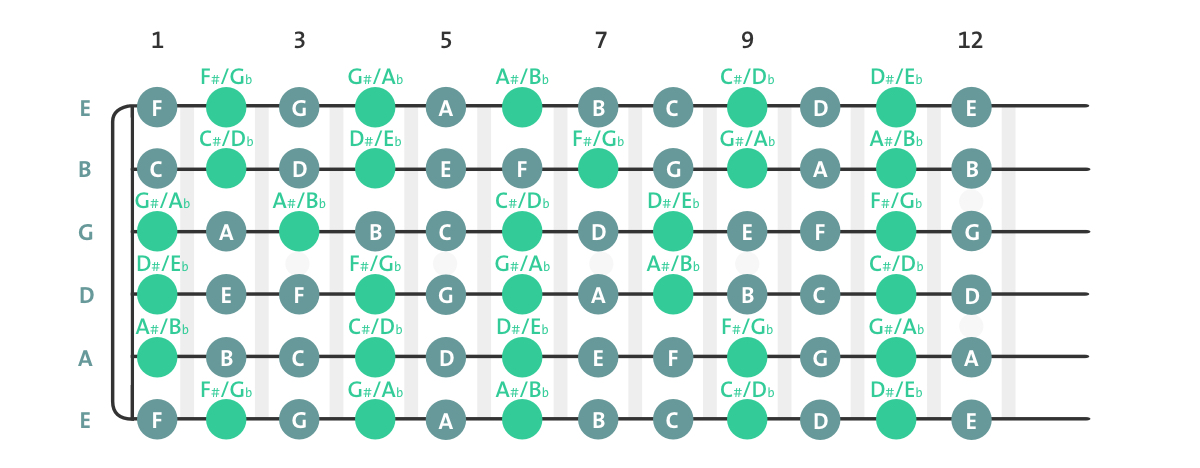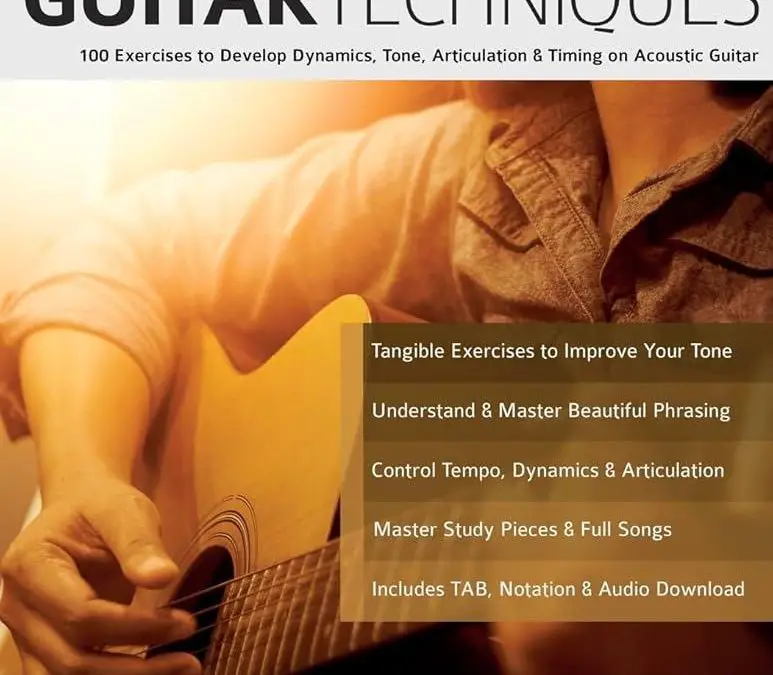Welcome to the world of fingerstyle guitar, where your fingers do the talking and your guitar becomes your trusty sidekick in the ultimate musical adventure. Mastering fingerstyle guitar isn’t just about hitting the right notes – it’s about unlocking your inner rockstar and unleashing a flood of emotion through your fingertips. So grab your guitar, put on your best rockstar face, and get ready to dive deep into the keys to truly expressive playing. Let’s turn those strings into emotional weapons of mass sonic destruction – in the best possible way, of course.
Contents
- 1 Understanding the Fundamentals of Fingerstyle Technique
- 2 Exploring the Importance of Right-Hand Accuracy and Precision
- 3 Developing Dexterity and Independence in the Fingers
- 4 Navigating the Fretboard: Tips for Smooth Transitions and Voicings
- 5 Incorporating Dynamics and Expression into Your Playing
- 6 Mastering the Art of Musical Phrasing in Fingerstyle Guitar
- 7 Dive into Alternate Tunings for Creative Expression
- 8 FAQs
- 9 Stay tuned and keep strumming!
Understanding the Fundamentals of Fingerstyle Technique
So, you want to master the art of fingerstyle guitar playing, huh? Well, strap in because we’re about to dive into the nitty-gritty fundamentals that will help you become the plucking master you’ve always dreamed of being!
First things first, let’s talk about expression-advanced-guitar-dynamics-mastery/” title=”Unlocking Musical Expression: Advanced Guitar Dynamics Mastery”>hand positioning. Your picking hand should be hovering just above the strings, fingers at the ready to strike like a cobra. Your fretting hand should be placed strategically on the neck, ready to form those intricate chords like a skilled origami artist!
Next up, let’s talk about fingerpicking patterns. There are endless possibilities when it comes to plucking those strings, but some popular patterns include the Travis Picking pattern and the classic Arpeggio technique. Experiment with different patterns until you find the one that makes your heart sing!
And finally, let’s not forget about dynamics. Just like a rollercoaster ride, your fingerstyle playing should have highs and lows. Play around with your volume and attack to create a musical journey that will captivate your audience and leave them begging for more!
Exploring the Importance of Right-Hand Accuracy and Precision
When it comes to playing the guitar, having right-hand accuracy and precision is key to shredding like a rockstar. Picture this: you’re in the middle of an epic guitar solo, but your right hand is flailing all over the place like a crazed octopus. Not a pretty sight, right? That’s where honing your accuracy and precision comes in to save the day!
So, why is it so important? Well, for starters, having precise right-hand technique allows you to play faster and cleaner. You don’t want to be that guitarist who sounds like they’re playing a jumbled mess of notes, do you? No, you want to be the guitar god who leaves jaws dropping and audiences in awe.
With the right technique, you can achieve that flawless sound you’ve always dreamed of. Imagine nailing every single note with such precision that it feels like you’re painting a musical masterpiece. That’s the power of having strong right-hand accuracy and precision on your side.
Plus, mastering this skill will take your playing to a whole new level. You’ll be able to play more complex pieces with ease, impressing even the most seasoned musicians. So, buckle down, practice diligently, and watch as your right-hand accuracy and precision elevate you to guitar greatness!

Developing Dexterity and Independence in the Fingers
Are you tired of fumbling with your fingers like a clumsy toddler trying to pick up Cheerios? Fear not, my dear reader, for I have some tips and tricks to help you develop dexterity and independence in those digits of yours!
First and foremost, practice makes perfect! Engage in activities that require fine motor skills, such as painting, knitting, or playing the piano. The more you challenge your fingers, the more they will rise to the occasion like tiny little Olympians training for the finger gymnastics event.
Next, let’s talk about finger exercises. Yes, you heard me right – finger exercises! No, this is not some bizarre form of finger yoga (although that would be quite entertaining). Try squeezing a stress ball or playing with silly putty to strengthen those hand muscles. You’ll be giving handshakes like a boss in no time!
And finally, don’t be afraid to delegate tasks to your fingers. Let them take the reins every now and then. Whether it’s buttoning up your shirt, tying your shoelaces, or flipping someone off (please use this one sparingly), give your fingers a chance to shine in the spotlight. Who knows, they might just surprise you with their newfound independence and finesse!

When it comes to navigating the fretboard, smooth transitions are key. You don’t want to sound like you’re playing a game of musical Twister with your fingers! Here are some tips to help you glide effortlessly from one chord to the next:
First, make sure you’re using efficient fingerings. You don’t want to contort your hand into strange positions just to play a chord. Experiment with different voicings until you find one that feels comfortable and allows you to move smoothly between chords. And remember, practice makes perfect (or at least less clunky).
Another trick is to focus on the common notes between chords. If you’re transitioning from a C major to an A minor, for example, notice that both chords share the notes E and C. By keeping these common tones in mind, you can find smoother pathways along the fretboard.
Lastly, don’t be afraid to get creative with your voicings. Just because a chord is traditionally played in a certain shape doesn’t mean you can’t experiment with different variations. Who knows, you might stumble upon a voicing that not only sounds great but also makes transitions a breeze!

Incorporating Dynamics and Expression into Your Playing
When it comes to playing music, incorporating dynamics and expression can take your performance from meh to masterpiece! Think of dynamics as the volume knob of your playing – you can go from whisper quiet to ear-splittingly loud in a matter of seconds. And expression? Well, that’s the secret sauce that adds emotion and feeling to your music.
Imagine a rollercoaster – now imagine your music as that rollercoaster. You want to take your audience on a wild ride of highs and lows, twists and turns, all while keeping them on the edge of their seats. Use dynamics to build tension and release it with a big, dramatic flourish. Play around with soft passages followed by sudden bursts of energy – keep your audience guessing, keep them on their toes!
Don’t be afraid to get a little dramatic with your playing! Channel your inner rockstar and let loose with wild jumps in volume, sudden shifts in tempo, and exaggerated phrasing. Remember, music is not just about hitting the right notes – it’s about telling a story, evoking emotions, and connecting with your audience on a deeper level.
So go ahead, play with passion, play with feeling, and most importantly, play with flair! Let your music speak for itself and watch as your audience is swept away on a whirlwind of dynamics and expression. Rock on, my fearless musicians!
Mastering the Art of Musical Phrasing in Fingerstyle Guitar
So you want to take your fingerstyle guitar playing to the next level, huh? Well, mastering the art of musical phrasing is key to wowing your audience and getting those fingers dancing on the strings like never before.
First things first, you’ve got to understand the importance of dynamics – playing loudly and softly at the right moments can make all the difference. Think of it like a rollercoaster ride, with highs and lows that keep your listeners on the edge of their seats (or maybe just swaying along in their chairs).
Next up, let’s talk about rhythm. Finding that perfect groove and getting into the pocket is essential for creating a seamless and captivating performance. Use syncopation and varied strumming patterns to keep things interesting and your audience begging for more.
And finally, don’t forget to add your own personal flair to your playing. Experiment with different techniques, incorporate slides, hammer-ons, and pull-offs, and find your unique voice on the guitar. Remember, there’s no one-size-fits-all approach to musical phrasing – make it your own and watch your fingerstyle skills soar to new heights.
Dive into Alternate Tunings for Creative Expression
Are you tired of the same old guitar tunes? Ready to shake things up and add some spice to your music? Well, it’s time to dive into alternate tunings and unleash your creativity!
With alternate tunings, the possibilities are endless. You can create unique chord progressions and melodies that will surprise and delight your audience. Say goodbye to boring standard tunings and hello to a world of musical exploration.
So how do you get started? Here are a few tips to help you on your journey:
- Experiment with different tunings – from open G to drop D, the world of alternate tunings is vast and varied. Find one that speaks to you and see where it takes your music.
- Explore new chord shapes – alternate tunings can open up a whole new world of chord voicings. Play around with different shapes and discover new sounds that will set your music apart.
- Don’t be afraid to make mistakes – music is all about experimentation. Embrace the unknown and let your creativity run wild. Who knows what hidden gems you might discover in the process?
FAQs
What’s the secret to playing fingerstyle guitar like a pro?
Oh, it’s simple - just practice for about 10 hours a day, sacrifice your social life, and sell your soul to the guitar gods. Easy peasy!
How can I improve my fingerstyle technique?
Well, first step is to grow some extra fingers. Just kidding! But seriously, focus on proper hand placement, utilize alternating bass patterns, and don’t forget to channel your inner Zen master.
What are some common mistakes to avoid when playing fingerstyle guitar?
Avoid using your teeth to play the strings – it’s not a good look, trust me. Also, watch out for tense shoulders, sloppy finger movements, and the dreaded ‘thumb over the neck’ technique. You’ll thank me later.
How important is dynamics in fingerstyle playing?
Oh, it’s crucial! Dynamics are like the spice of fingerstyle playing – they add flavor, depth, and that extra kick that will make your audience sit up and take notice. Plus, it’s a great way to show off your musical chops.
Any tips for adding emotion and expression to my fingerstyle playing?
Absolutely! Don’t just play the notes - feel them. Connect with the music on a deeper level, experiment with different phrasing and tempo variations, and don’t be afraid to let your emotions shine through your playing. Remember: music is a language, so speak from the heart.
Stay tuned and keep strumming!
Congratulations on making it this far on your fingerstyle guitar journey! Remember, mastering the art of fingerpicking takes time, practice, and a whole lot of patience. So grab your guitar, put on your favorite fingerpicking tune, and keep those fingers dancing across the strings. Who knows, maybe one day you’ll be the next fingerstyle guitar virtuoso! Happy strumming!



